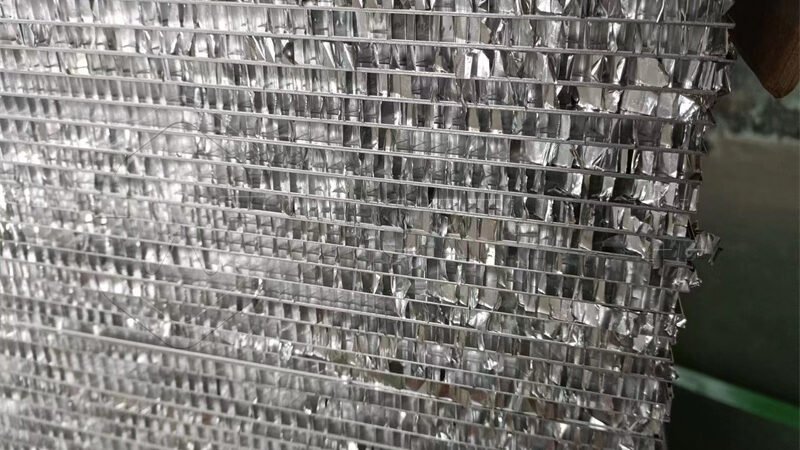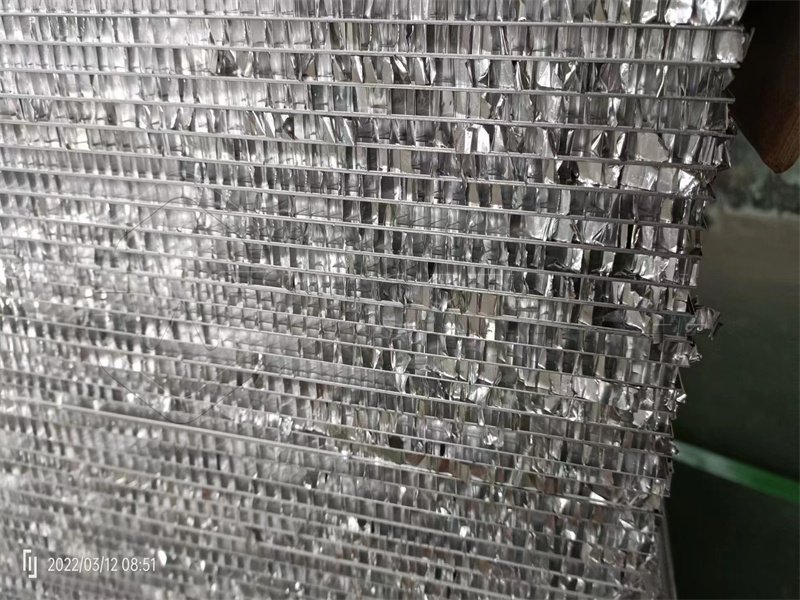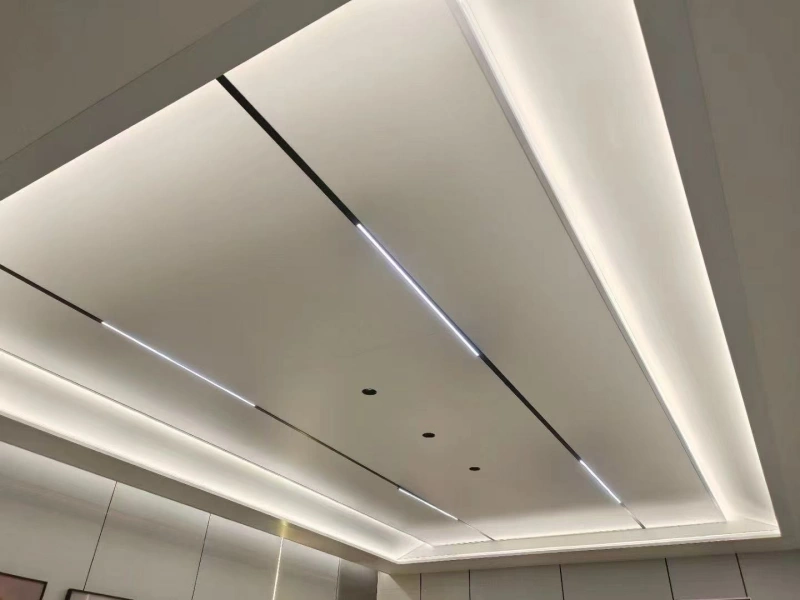Honeycomb panels are lightweight, high-strength composite materials widely used in aerospace, architecture, and transportation. While they offer excellent strength-to-weight ratios and design flexibility, they also come with certain limitations. This guide explores the key disadvantages of honeycomb panels to help you make informed decisions for your projects.
Key Disadvantages of Honeycomb Panels
1. Higher Cost Compared to Solid Panels
-
More expensive than traditional materials like plywood or solid metal sheets.
-
Complex manufacturing process increases production costs.
-
Specialized installation may require skilled labor, adding to expenses.
2. Limited Impact Resistance
-
Prone to denting when subjected to sharp impacts.
-
Core damage can be difficult to repair once deformed.
-
Not ideal for high-traffic areas where impacts are frequent.
3. Moisture Sensitivity (Especially Paper/Cardboard Core)
-
Paper-based cores can absorb water, leading to delamination.
-
Metal cores (aluminum) may corrode in humid environments without proper sealing.
-
Reduced structural integrity when exposed to long-term moisture.
4. Difficult to Modify On-Site
-
Hard to cut or drill without specialized tools.
-
Edges may fray if not properly finished.
-
Limited adjustability once installed.
5. Complex Installation Requirements
-
Requires specific adhesives for proper bonding.
-
Needs precise framing to prevent sagging.
-
Not DIY-friendly compared to traditional panels.
6. Fire Resistance Limitations
-
Non-fire-rated cores (like paper or plastic) can be flammable.
-
Aluminum cores conduct heat, potentially compromising fire barriers.
-
May require additional fireproof coatings for building compliance.
7. Limited Load-Bearing Capacity
-
Not suitable for heavy structural loads without reinforcement.
-
May deform under prolonged pressure (e.g., shelving or flooring).
-
Requires additional support for high-stress applications.
8. Surface Damage Risks
-
Face sheets can scratch or dent more easily than solid materials.
-
Difficult to refinish once damaged.
-
Not ideal for abrasive environments.
9. Thermal Expansion Issues
-
Different expansion rates between core and face materials may cause warping.
-
Requires expansion joints in large installations.
-
Not ideal for extreme temperature fluctuations.
10. Recycling and Disposal Challenges
-
Composite structure makes recycling difficult (mixed materials).
-
Limited end-of-life disposal options compared to pure metal or wood.
-
May require specialized recycling facilities.
Comparison with Alternative Materials
| Disadvantage | Honeycomb Panels | Solid Aluminum | Plywood | Steel Sheets |
|---|---|---|---|---|
| Cost | High | Medium | Low | Medium |
| Impact Resistance | Low | Medium | Medium | High |
| Moisture Resistance | Variable (depends on core) | High | Low (unless treated) | Medium |
| Ease of Installation | Complex | Moderate | Easy | Moderate |
| Fire Resistance | Medium (depends on core) | High | Low | High |
When to Avoid Honeycomb Panels?
-
High-impact environments (e.g., industrial floors, vehicle bumpers).
-
Extreme weather exposure (unless specially treated).
-
Low-budget projects where cost is a major concern.
-
DIY applications without professional support.
-
Structural load-bearing without additional reinforcement.
Comparison with Other Panel Types
| Feature | Honeycomb Panel | Solid Aluminum Sheet | Aluminum Composite Panel (ACP) |
|---|---|---|---|
| Weight | Very Light | Heavy | Light |
| Cost | Higher | Medium | Lower |
| Installation | More complex | Easier | Easy |
| Impact Resistance | Medium | High | Low to Medium |
| Repair & Maintenance | Difficult | Simple | Moderate |
Mitigating the Disadvantages
✔ Choose the right core material (e.g., aluminum for moisture resistance).
✔ Use protective coatings to enhance durability.
✔ Ensure proper installation by experienced professionals.
✔ Select fire-rated options for building compliance.
✔ Consider hybrid designs (e.g., honeycomb with solid reinforcements).
Conclusion
While honeycomb panels offer lightweight strength and design versatility, they come with notable drawbacks, including higher costs, moisture sensitivity, and limited impact resistance. Understanding these disadvantages helps determine whether they are suitable for your project or if alternative materials might be a better choice.
Key Takeaways:
-
Not ideal for high-impact or high-load applications.
-
Moisture and fire resistance depend on core material.
-
Professional installation is often required.
-
Higher initial cost compared to traditional panels.
If your project demands lightweight, rigid panels and you can address these limitations, honeycomb panels remain an excellent choice. However, for heavy-duty or budget-sensitive applications, alternatives like solid metal or plywood may be more practical.
Looking for alternatives? Check our guides on solid aluminum panels, fiberglass composites, and reinforced plastics for different project needs!


